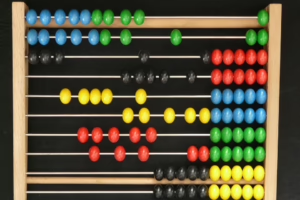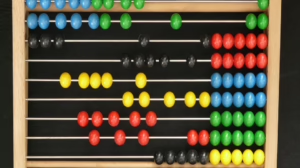Decoding the Math Test Paper: Tips for Every Student
Mathematics is a subject that many students find challenging. When approaching math tests, the stress can sometimes overshadow the knowledge and skills learned throughout the course. However, decoding a math test paper goes beyond just practicing problems. It requires a strategic approach that can help students maximize their scores and minimize anxiety. This article will explore effective techniques to decode math test papers, offering tips for preparation, execution, and post-test reflection.
Understanding the Structure of Math Tests
1. Types of Questions
Math tests typically consist of various types of questions: multiple-choice, short answer, and extended response. Each type requires a different strategy for decoding and answering.
-
Multiple-choice questions offer a list of possible answers. Here, it’s crucial to understand the problem thoroughly and eliminate incorrect options to increase the likelihood of selecting the correct answer.
-
Short answer questions require students to show their work and provide a concise answer. These questions often assess not only the final answer but also the methodology.
- Extended response questions challenge students to integrate concepts and justify their reasoning. This requires a deeper understanding of mathematical principles.
2. Analyzing the Weight of Each Section
Most math tests have a distribution of marks associated with different sections or types of problems. Prioritizing higher-weight questions in your study and test-taking strategy can lead to better overall scores. Students should look at the test format beforehand and allocate their time and efforts accordingly.
Preparation Before the Test
1. Review Previous Tests and Quizzes
Going through past assessments is a vital strategy. It can highlight the types of questions frequently asked and the common areas where students struggle. Use these insights to focus your study efforts on topics that are likely to appear on the test.
2. Know the Curriculum
Familiarity with your syllabus or curriculum can provide a road map for what you need to study. Many math tests are designed around specific curriculum standards, so understanding these can help you target your preparation more effectively.
3. Form a Study Group
Collaborating with peers can facilitate deeper understanding through discussion. A study group can provide a platform for students to clarify each other’s doubts, solve problems collectively, and share different solving techniques.
4. Practice with Timed Tests
Simulating the test environment by taking practice exams under timed conditions can help students get used to the pacing required for the actual test. Time management is crucial in math exams, where students may struggle to complete all questions.
Strategies for Decoding the Test Paper
1. Read Instructions Carefully
Before diving into solving problems, take a moment to read the entire test paper. Note the instructions and any specific guidelines provided. Misunderstanding the instructions can lead to lost marks.
2. Scan through the Entire Paper
Quickly scan through the test paper to see the types of questions and topics covered. This will give you an idea of how to approach your time management during the test.
3. Start with What You Know
Begin with questions you find easier. Tackling these first can help build confidence, boost morale, and ultimately provide you with more time for the questions that require deeper thought.
4. Break Down the Questions
For more complicated problems, break them down into smaller, manageable parts. Analyze what the question is asking, and determine which formulas or theorems apply.
Example of Breakdown:
Question: A rectangle has a length of 10 cm and a width of 5 cm. What is the perimeter?
- Identify shape: Rectangle
- Recall formula for perimeter: P = 2(l + w)
- Plug in values: P = 2(10 + 5) = 30 cm
5. Show Your Work
Always show your working steps, even for multiple-choice questions. This is particularly vital for short and extended response questions, where partial credit may be awarded for your method, even if your final answer is incorrect.
6. Use the Process of Elimination
In multiple-choice questions, use the elimination method to narrow down your choices. Dismiss answers that are clearly incorrect to increase the odds of guessing correctly if you’re unsure.
Common Pitfalls to Avoid
1. Ignoring Common Errors
Students often make small mistakes like misplacing a decimal or sign error. Double-check your calculations and ensure that you are following the correct order of operations (PEMDAS/BODMAS).
2. Overlooking Word Problems
Word problems can be intimidating, leading many students to skip them initially. However, these questions often contain clues. Identify keywords that indicate which operations to perform (e.g., "total means addition," "difference means subtraction").
3. Losing Track of Time
Keep an eye on the clock and be aware of how much time you have left. If you find yourself stuck, it’s usually better to move on and return to it later, rather than risk not finishing the test.
After the Test: Reflection and Learning
1. Review Your Answers
If time permits, go back through your answers before submitting the test. This review can often catch small mistakes that could lead to lost marks.
2. Analyze Your Performance
After receiving your graded test back, take the time to review which questions you got wrong and why. Understanding where mistakes were made can be instrumental in preparing for future tests.
3. Seek Feedback
Don’t hesitate to approach your teacher for feedback on your performance. They can offer helpful insights and strategies tailored to your needs.
Mental Preparation and Test-Taking Strategies
1. Positive Mindset
Maintaining a positive attitude can significantly impact performance. Visualize success and remind yourself how well you’ve prepared. Avoid self-doubt, which can lead to anxiety during the test.
2. Breathing Techniques
Stress management techniques, such as deep breathing, can help calm nerves before and during the test. Taking a moment to breathe can clear your mind and improve focus.
3. Stay Hydrated and Energized
Physical well-being is closely linked to mental performance. Make sure you’re well-hydrated and have eaten a nutritious meal before your test. Avoid heavy or sugary foods that may cause energy crashes.
Conclusion
Decoding a math test paper is not merely about performing calculations or memorizing formulas. It requires a mix of strategy, preparation, and reflection. By understanding the structure and types of questions, effectively preparing, and employing smart test-taking strategies, students can navigate the complexities of math tests more successfully. Remember that practice and persistence are key, and learning from each test experience will not only improve math skills but also lead to greater confidence in future assessments.
Modern Footnote Sources:
- Purdue Online Writing Lab. "Strategies for Success in Math Tests." Accessed October 2023. Purdue OWL
- Khan Academy. "Math Test Preparation Tips." Accessed October 2023. Khan Academy
- Math Is Fun. "How to Prepare for a Maths Exam." Accessed October 2023. Math Is Fun


























Add Comment